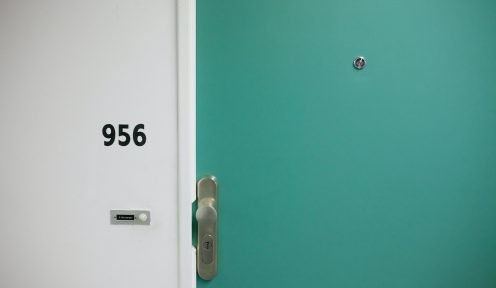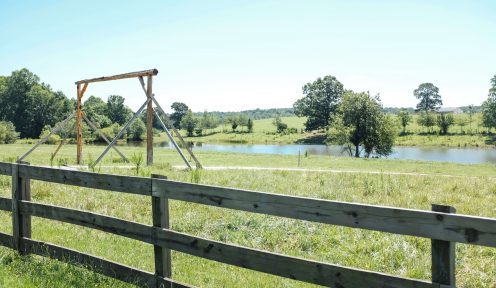
20.06.2019
Real Estate in Sweden
These are the highlights if you want to know more about Real Estate in Sweden. This entry was drafted by Moll Wendén Law Firm.
This collaboration is a brief step-by-step guidance. In no case it can be considered as legal advice. If you want -or need – legal advice, ask for a lawyer or a law firm. In that case Moll Wendén Law Firm is an excellent option in Sweden.
Types of ownership
Swedish land is divided into property units. Ownership of land is always connected to a registered property unit. A property unit can be demarcated horizontally as well as vertically thereby creating three-dimensional property units. Absolute ownership of a property unit entails the right to own, occupy and dispose of the property unit. Where a right less than absolute ownership is intended, a right to site leasehold may be granted. Real estate may also be owned by a tenant-owner association (Sw. Bostadsrättsförening) or a co-operative lease association (Sw: Kooperativ hyresrättsförening).
A right to a site leasehold (Sw. tomträtt) may only be granted over publicly owned land. The site leaseholder essentially has the same legal status as an owner of land, thus he has the exclusive right to use and occupy the property (but he has no right to sell the land). A right to site leasehold is generally granted for an indefinite period in return for an annual fee, normally calculated as a percentage (equalling the long term interest rate less inflation) of the land value.
When a tenant-owner association purchases a property unit the association becomes owner of the real property. The members of the association acquire shares in the association’s capital, corresponding to their designated units (usually flats) which they have an exclusive right to use without any limitation in time as long as they pay a monthly fee to the association to cover the running expenses of the building and the association’s interest cost where applicable. The acquirer of the equity share in the association must be granted membership of the association in order for the purchase to be valid. A tenant-owner association can be formed not only for residential purposes but also where a building is used for commercial purposes or is used for a mix of residential and commercial purposes.
An association similar to the tenant-owner association is the so called co-operative lease association. It is an economic association formed for the purpose to lease residential apartments to its members. Every member of the association has to pay a member fee and the association can also require its members to pay special fees. If the lease period is terminated the members only have a right to regain paid fees. The association’s profit can only be divided between the members and is generally divided between them in relation to their contributions.
In 2009 a new type of housing was made possible in Sweden using three-dimensional real estate. These so-called ownership apartments (Sw. ägarlägenheter) gives the owner a possibility to own their own apartment in an apartment building. Ownership apartments mean greater autonomy because you own the apartment and you can register it under the same rules as for other types of property. In addition, no tenant-owner association must approve purchases or subleasing. The owner of the apartment may freely pledge, encumber or dispose of their three-dimensional property.
Land Registry
All property units are registered in the Land Registry (Sw. Fastighetsregister) which is computer-based. The Land Registry is administered by the Land Registration Authority (Sw, Fastighetsinskrivningen) which is part of the Swedish National Land Survey (Sw. Lantmäteriet). The Swedish National Land Survey maintains seven regional branches in Sweden.
All registered property units have specific names and codes, normally consisting of the name of the municipality or city where the property is situated, an area name and numbers for local identification. The Land Registry contains information for every property unit including the location of the property, the registered owner (and the registered leaseholder where applicable), mortgages easements, tax assessment values and the most recent transfer, including the purchase price. The records and documents submitted to the Land Registry are public and anyone can request an extract from the registers (certificates of searches) (Sw. Gravationsbevis). The registers provide useful information and are regularly used in the process of transferring property. Detailed maps of the real property can be provided by the Swedish National Land Survey.
Transfer
Normally the parties will use two contractual documents for the transfer of real property in Sweden. The first document is a purchase agreement (Sw. Köpekontrakt) including all conditions, warranties etc. The second document, which is normally drawn up on the day of the actual transfer of property to the purchaser, is the Bill of Sale (Sw. Köpebrev). The Bill of sale confirms that the purchase price has been paid etc. The formal requirements for a transfer of real property to be valid according to the Swedish Land Code (Sw. Jordabalken) are relatively simple. Firstly, the purchase agreement must be in writing and be signed by both the seller and the purchaser. Secondly, the agreement must include information about the purchase price and the name and code of the property unit. Thirdly, the agreement must contain a declaration that the seller conveys the property to the purchaser. Finally, if the seller has any spouse or co-habitee their approval is also required. As regards witnesses, it is not an absolute requirement to have them but the absence of witnesses when it comes to the seller’s signature may cause a delay in the registration procedure. It is also important to be aware of that a written or oral option to purchase or sell real property is not valid.
Although a registration of ownership in the Land Registry is not necessary for a valid transfer of ownership, it is important that an application is filed at the Land Registry within three months from the acquisition of the property. Normally the Bill of Sale is then also submitted to the Land Registry and thereby made public. When the ownership is registered in the Land Registry, the Land Registration Authority issues a certificate of title to the owner. The registered owner has the formal capacity to take action involving the property and will be regarded as the owner in relation to authorities. A registered owner may also mortgage the property and agree on other rights over the property (e.g. rights of use and enjoyment). Furthermore, if a property has been sold twice by the same seller, the first purchaser to apply for registration of ownership normally has priority over the other purchaser.
The relevant tax applied on a purchase of real property is stamp duty (explained below).
Mortgages
Swedish banks are in general very reluctant to grant loans for real property investments without any security in the property. In practise mortgage is the only recognised formal fixed security taken over property in Sweden. The formal capacity to mortgage a property belongs to the registered owner of that property unit. If the owner is an individual and is married or co-habitant, written consent from the spouse/co-habitee is required. To mortgage the property unit an application has to be filed at the Land Registration Authority. The registered owner thereafter receives a mortgage certificate (Sw. pantbrev) with the value specified and the certificate is registered in the Land Registry. As regards the total face value of the mortgage certificates that may be registered and issued there is no limit. However, the practical value of all the mortgage certificate issued is naturally limited to the value of the property. For issuing the certificate a stamp duty at a rate of two per cent of the face value of the mortgage certificate is charged. No extra stamp duty is levied when the mortgage certificate is used as security for a liability.
When the mortgage certificate is delivered to the creditor for the purpose of constituting security for a debt or some other obligation, the security is perfected. If part of the amount of the mortgage certificate is not needed to cover the debt, the excess amount may be used as second ranking collateral for some other debt or obligation. In the case of a second mortgage as described above, a notice to the holder of the mortgage certificate is needed for the security to be perfected. Until the loan is settled the creditor’s lien and the mortgage right exists. When the loan is settled, the mortgage certificate should be handed back to the owner, who may then use the same mortgage certificate as security for a new loan or any other liability without additional stamp duty or costs.
Now a day, however, its more common to use electronical mortgage certificates. These corresponds to the physical possession of a mortgage letter. The Land Registry shows that the certificate is electronic. It also holds information about who is the recipient of the electronic mortgage letter.
Restrictions on Acquisitions
There are no restrictions on foreign ownership of real property in Sweden. However, there are some legal restrictions imposed regarding the transfer of property in general.
The pre-emption act expired at the end of April 2010. It allowed Swedish municipality’s pre-emption rights when real property (or a right to site-leasehold) were sold. However, the municipality’s pre-emption right still applies to sales of real property, if the municipality registered the property in the Land Registry before the first of May 2010.
Act on Acquisitions of Apartment Property etc was in force until 2010 (Sw: Lagen om förvärv av hyresfastighet). According to the law transfers of properties taxed as rental housing units did not in general require authority approval. However, it was obligatory to notify the municipality of an agreement on transfer of such properties (and the site leasehold right to such properties) within three months from entering into the agreement. One of the purposes of notifying the municipality was to protect the existing tenant’s interests when there rental housing unit were sold. To maintain the purposes of the act, stricter rules were introduced in another act called The Act on Housing Administration.
According to the Agricultural Land Acquisition Act (Sw. Jordförvärvslagen) transfers of land taxed as agricultural property require approval by the County Administrative Board (Sw. Länsstyrelsen) if the property is situated in designated parts of Sweden or the acquirer is a legal entity and the property is purchased from an individual or the estate of a deceased person. Approval is required also when agricultural property is transferred by a contribution in kind to a company or as a dividend from a company. If the land is purchased at a compulsory auction no approval is needed. For a legal entity approval is normally given only in very special situations.
Restrictions on Development
The main act in Sweden on the regulation of the use of land is the Planning and Building Act, (“PBA”), (Sw. Plan- och bygglagen). According to the PBA each municipality in Sweden must adopt plans regulating the utilisation of land and water within the municipality. The plans to be adopted are comprehensive plans (Sw. Översiktsplan), regional plans (Sw. Regionplan) and detail plans (Sw. Detaljplan). A detail plan applies to a limited part of the municipality (normally a few blocks in a town) and is binding on the authorities as well as individuals during the time it is to be achieved. The plan includes regulations concerning the use of the land and construction work on the land.
Before construction work is started a building permit (Sw. Bygglov) is required and an application therefore must be sent to the local building committee (Sw. Byggnadsnämnden). Which activities on or changes of buildings and property that require building permits are regulated in the PBA in detail. As regards activities including erecting, altering, and extending of buildings or amended use of a building or part thereof, permits are compulsory. If the development project adheres to the detail plan and construction standards the property owner will in general be entitled to the building permit. If the building permit is denied by the local building committee, the decision can be appealed to the County Administrative Board (Sw. Länsstyrelsen). The local building committee can also issue a preliminary statement on whether a building or an installation that requires a building permit may be permitted on the intended site. The PBA also contains provisions with respect to demolition permits and permits regarding ground works. In addition to the PBA it should also be mentioned that the Environmental Code (Sw. Miljöbalken) regulates planning on a national level in order to economise with natural resources such as forests and running water.
Leases
Leases can be granted either for residential or commercial purposes. The regulations on commercial and residential leases vary in important areas and the legal provisions are to a great extent mandatory in favour of the tenant. The below overview concentrates on different aspects on commercial leases.
There is no requirement of a certain form for entering into a legally binding lease agreement. However, almost all lease agreements are in written form. Often when letting commercial premises, a rather simple standard contract form is used. The standard form has been drawn up and negotiated between the Swedish Property Federation in co-operation with the Swedish Federation of Trade and the Swedish Hotels- and Restaurants Association. However, it is common that the parties agree on specific provisions attached to the standard agreement. The term of lease can be fixed or continuous. Usually, leases are granted for a fixed period between three to five years. There are, however, many examples of both shorter and longer lease periods. In towns and cities the maximum term of lease is 25 years, but on the countryside a lease period of up to 50 years is allowed. There are no restrictions regarding the minimum term of the lease.
The rent has to be a fixed sum, but for commercial properties the parties may freely agree on the amount of this sum. It is very common that commercial tenants pay added charges for heating, cooling, water and property tax. Commercial premises are sometimes let on a turnover basis, and the rent is determined as a percentage of the income generated by the tenant. Normally the tenant has to pay the rent in advance and in quarterly instalments. It is also quite common that the rent is linked to changes in the consumer price index from year to year. However, such indexation is not allowed if the lease period is shorter than three years.
A tenant’s main obligations are to pay the rent, use the premises only for agreed purpose, to take good care of the premises and not disturb its neighbours. The parties are free to agree on responsibility and the duty to pay for maintenance of the premises. As regards commercial leases it is not unusual that the majority of the costs for maintenance and utilities of the premises are borne by the tenant. The landlord’s main obligations are to provide premises fit for the intended purpose/use and to repair defects cause by ordinary wear and tear.
Unless the landlord has very strong reasons for not extending a lease after the expiration of the agreed lease period the commercial tenant is entitled to compensation for hiss loss (Sw. Indirekt besittningsskydd). The right to compensation ceases if the landlord offers the tenant an extension of the lease on market terms and the tenant does not accept those terms. The right to compensation is also waived if the tenant does not submit the matter to the Regional Rent Tribunal within two months from the date he received the notice for termination. A tenant may also in advance waive his right to extension or compensation in a separate document. If the lease has been in force less than nine months at the time for signing the waiver, an approval from the Rent Tribunal might be necessary for the waiver to be valid.
In general, a tenant has no right to transfer a lease agreement without the consent of the landlord. However, one important restriction of the rights of the landlord is that the Rent Tribunal may, subject to certain conditions, authorise the tenant to transfer his tenancy to a person who is taking over the trade or business carried on by the tenant on the premises.
Stamp Duty
The relevant tax in case of purchases of real property (and leasehold rights) is stamp duty. Stamp duty falls due when the purchaser’s title to the property is registered in the Land Registry (however special regulations apply when a real property is sold within a group of companies). Stamp duty is also triggered when real property (or a leasehold right) is transferred as a contribution in kind to a company and when real property is distributed as a dividend in kind from a company. Normally the stamp duty is paid by the purchaser, but if the purchaser does not pay, the seller is liable for it. The stamp duty is either based on the purchase price (or the value of the real property) or the tax assessment value of the property for the year before the registration of ownership, whichever is the higher. The stamp duty rate triggered for transfers in case the purchaser is an individual or a tenant-owner association is 1.5 percent of the value, and in case the purchaser is a legal entity, 4.25 per cent of the value.
Stamp duty is also triggered when a mortgage certificate is issued by the Land Registration Authority. The stamp duty on a mortgage certificate is 2 per cent off the face value of the certificate. As regards rent or lease agreements no stamp duty is triggered.
VAT
Transfers or letting of property does not trigger value added tax (“VAT”) (Sw. mervärdesskatt, abbr. moms) However, the owner of a business property may voluntarily choose to have premises, in which commercial activities are carried out, registered for VAT (provided that the tenant is liable for VAT). The registration can also be applied for by a tenant or a sub-tenant involved in commercial activities on the premises. As long as the premises are registered for VAT, the owner can charge VAT on the rent and offset it against VAT paid by him on maintenance, repairs and other expenses as well as building costs.












